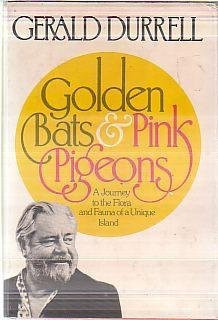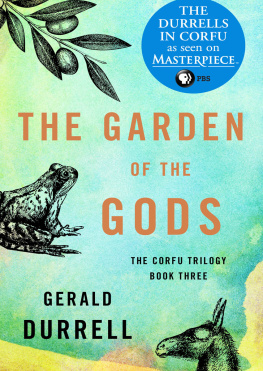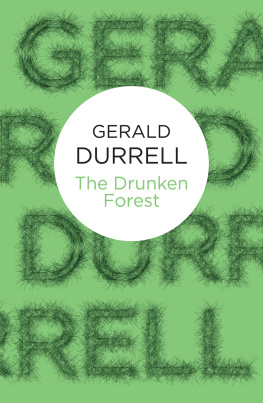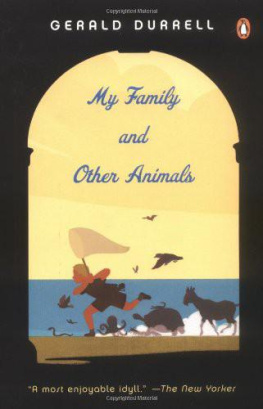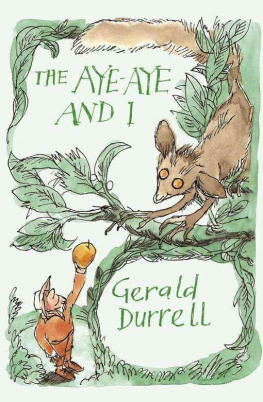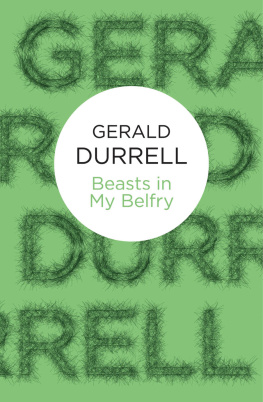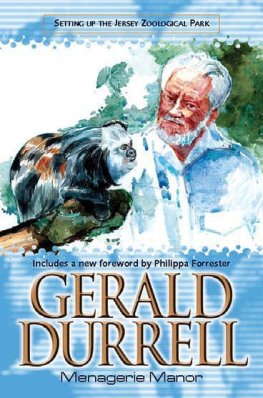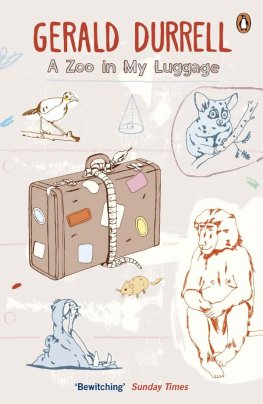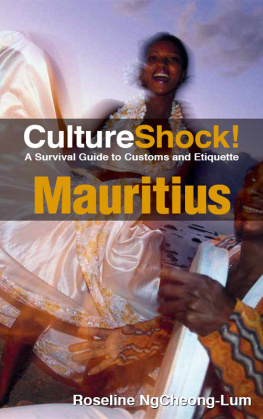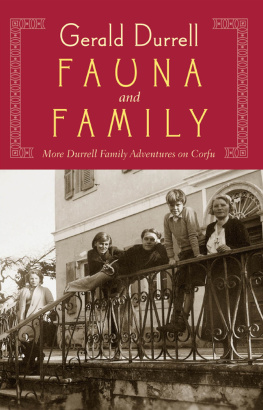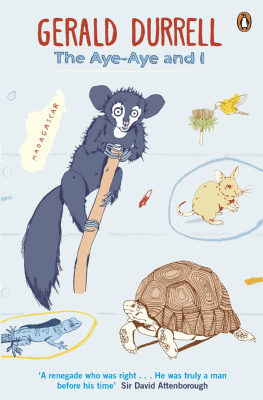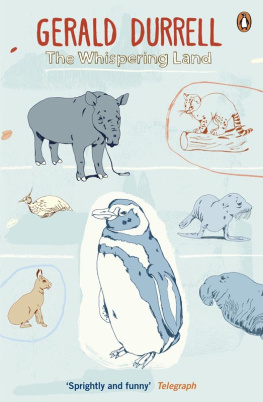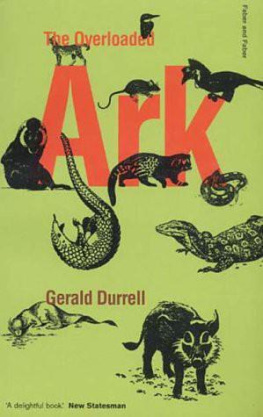Table of Contents
Table of Contents
GOLDEN BATS AND PINK PIGEONS
First published in the UK by Collins in 1977
Previously published by Fontana 1979 and HarperCollins in 1996
This edition published by Summersdale Publishers Ltd. 2007
Copyright Gerald Durrell, 1977 Illustrations by Edward Mortelmans
All rights reserved.
The right of Gerald Durrell to be identified as the author of this work has been asserted in accordance with sections 77 and 78 of the Copyright, Designs and Patents Act 1988.
Condition of Sale
This book is sold subject to the condition that it shall not, by way of trade or otherwise, be lent, re-sold, hired out or otherwise circulated in any form of binding or cover other than that in which it is published and without a similar condition including this condition being imposed on the subsequent publisher.
While every effort has been made to trace copyright in all material in this book, the rights holder apologises if he has inadvertently failed to credit any such ownership, and upon being notified, it will be corrected in future additions.
Summersdale Publishers Ltd
46 West Street Chichester West Sussex PO19 1RP UK
www.summersdale.com
Printed and bound in Great Britain.
ISBN: 1-84024-635-9 ISBN 13: 978-1-84024-635-3
This is for Farida and Wahab
whose kindness and hospitality
sum up the whole charm of
Mauritius
CONTENTS
Foreword by Lee Durrell...........................................................7
A Word in Advance.....................................................................9
1. Macabee and the Dodo Tree................................................11
2. Pink Pigeon Palaver...............................................................34
3. Round Island.........................................................................50
4. The Frugivorous Flight........................................................80
5. The Enchanted World........................................................114
6. Boa-Hunt............................................................................139
7. Pink Pigeon Postscript........................................................163
Tailpiece..................................................................................168
Afterword by Toni Hickey......................................................169
A Message from the Durrell Wildlife Conservation Trust................175
FOREWORD
by Lee Durrell
I t's no wonder that Mauritius attracted Gerald Durrell like
a magnet. It was the home of that large flightless bird, the dodo, the definitive symbol of extinction. Gerry had established his animal sanctuary in Jersey, now called the Durrell Wildlife Conservation Trust or 'Durrell' for short, to turn the tide of species extinctions. He started by breeding rare animals so that their kind were not lost forever, but in time he focussed on ensuring the survival of certain key species in the wild. The Mascarenes, a complex of islands in the western Indian Ocean, including Mauritius, its offshore islets and Rodrigues, were the scene of the Trust's first sustained overseas conservation efforts, where the initial steps were taken with the ultimate goal in sight. Golden Bats and Pink Pigeons records the highlights of this journey, often hilarious, sometimes moving, and animated with great characters, both human and non-human, always described in Gerry's inimitable style.
Gerry and his assistant, John Hartley (later to become the Trust's Conservation Programme Director), set out to learn for themselves the plight of various creatures unique to the islands from the snakes and lizards of Round Island, to the fruit bats of Rodrigues, to the pigeons and kestrels of Mauritius itself and to see what could be done to save them. The strategy involved setting up breeding programmes not only in Jersey, but also in Mauritius, at a facility which is now named the Gerald Durrell Endemic Wildlife Sanctuary.
Gerry wanted the first ever student at the Trust's training centre to come from the land of the dodo, so he was on the lookout for promising candidates during those early trips. In fact, the training centre was only a twinkle in his eye at that point, but he had long been convinced that the breeding of endangered species should be done in the country of origin of the species concerned. Thus he intended for the animal sanctuary in Jersey to become a 'mini-university' for conservation, whose graduates would return to their homes and put what they had learned into practice.
Mauritius, not surprisingly, is the scene of our first unequivocal conservation successes. The work started by Gerry and John some thirty years ago evolved into full-scale species recovery programmes, and now Durrell is credited with saving more species of bird from extinction than any other organisation. You will read more about these achievements in the excellent afterword by Toni Hickey, Senior Bird Keeper at Durrell, which brings me neatly to my final thought here. It is about the remarkable commitment and selfless hard work that our staff, like Toni and her colleagues, undertake to follow Gerald Durrell's dream.
These men and women, plus the graduates of our International Training Centre yes, Gerry did indeed set up his training centre are collectively referred to as Durrell's.
A WORD IN ADVANCE
I think a brief explanation of this book is called for. It describes
two separate trips that I, my assistant John Hartley and my secretary Ann Peters made to the enchanting island of Mauritius. My reasons for going there were twofold. I established the Jersey Wildlife Preservation Trust some years ago to help endangered species by breeding them in captivity. This we have done with great success, but it became obvious to me that really the animals in question should be bred in their country of origin. The problem was that in most of these countries there were no personnel trained in the delicate art of wild animal husbandry. The trust, therefore, set up a scholarship scheme whereby we give financial assistance to students to come to us for training and then return to their countries to set up captive breeding programmes. To inaugurate the scholarship scheme, as the Dodo was our symbol, it seemed appropriate that a Mauritian student should be the first to benefit. I therefore went out to discuss this whole business with the Mauritian Government. At the same time, I wished to see some of the endangered birds, mammals and reptiles and to find out if we could in any way help the Mauritian Government in their efforts to save them. This is the story of how we set about it.
CHAPTER ONE
MACABEE AND THE DODO TREE
W hen you are venturing into a new area of the world
for the first time, it is essential especially if you are an animal collector that you do two things. One is to get as many personal introductions as you can to people on the spot; the second to amass as much information as possible, no matter how esoteric or apparently useless, about the place that you are going to. One of the ways you accomplish this latter is by contacting the London Embassy or High Commission of the country concerned. In many cases, this yields excellent results and you are inundated with maps and vividly coloured literature containing many interesting facts and much misinformation. In other cases, the response is not quite so uplifting. I am, for example, still waiting for all the information promised me by a charming Malay gentleman in the London High Commission when I was going to that country. My trip there was eight years ago. However, the response you get from the Embassy or High Commission generally gives you some sort of a clue as to the general attitude prevailing towards life in the country concerned.

